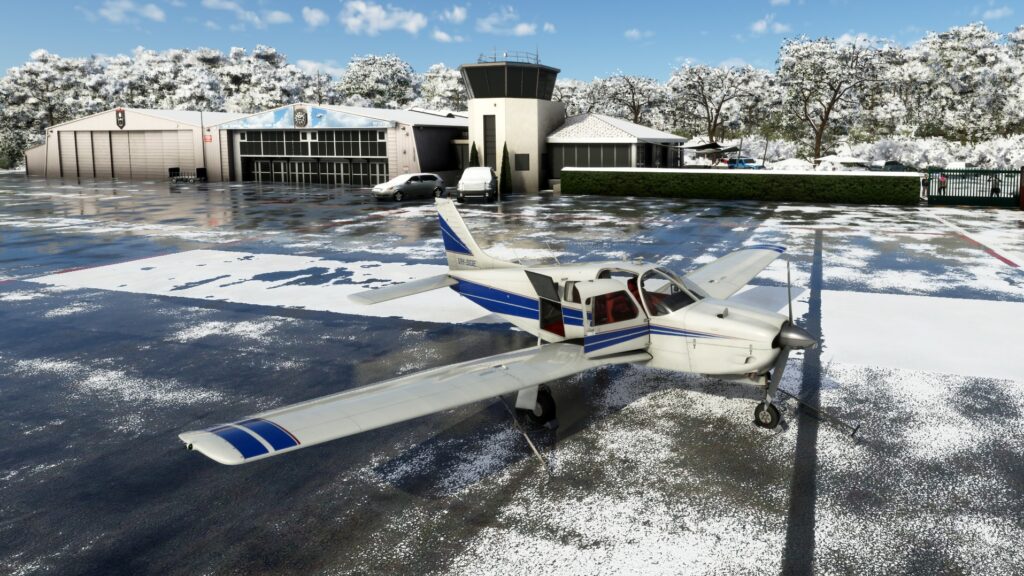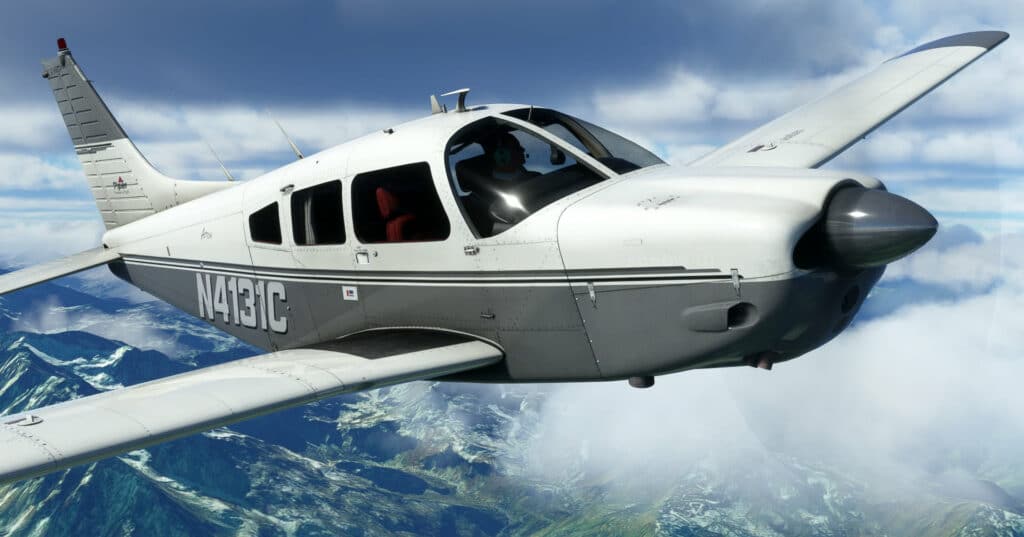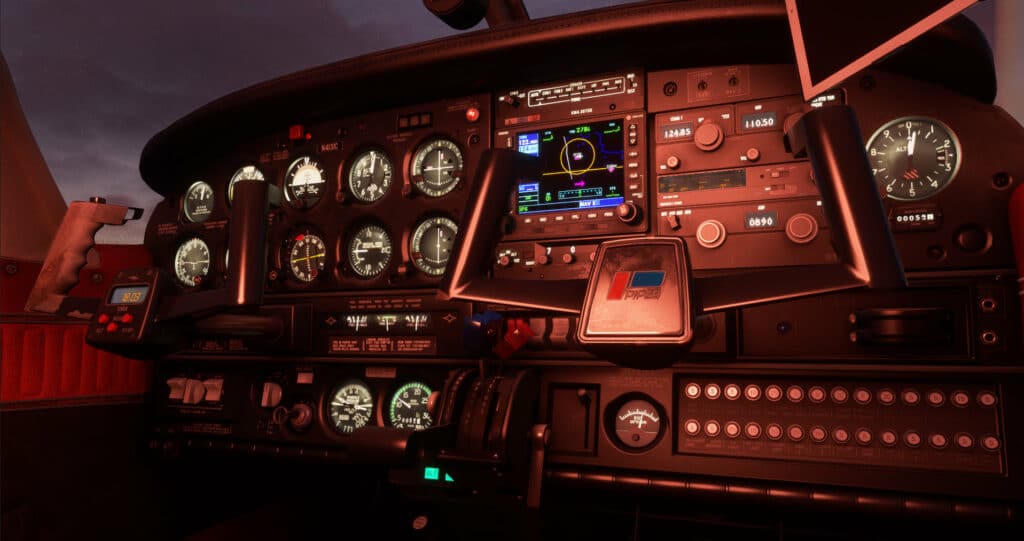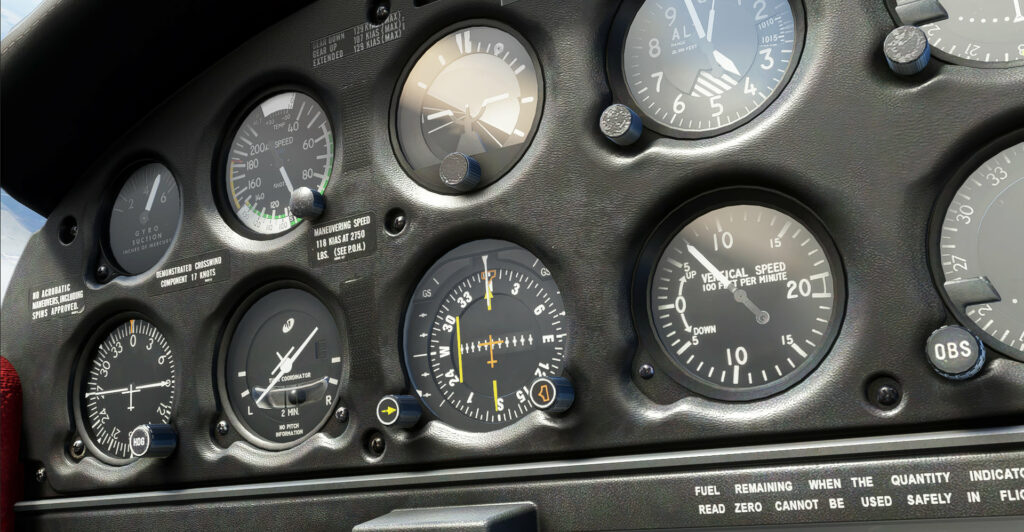Just Flight hat gestern die Umsetzung der Piper PA-28R Arrow III für den MSFS veröffentlicht. Die Arrow III ist Teil der Piper Cherokee Familie und zeichnet sich durch ein Einziehfahrwerk, sowie einem 200 PS starken Lycoming Motor aus. Gegenüber dem Vorgängermodell, der Arrow II, kommt außerdem ein um 50kg erhöhtes Abfluggewicht auf die Haben-Seite. Just Flight möchte im hauseigenen Shop 37,95€ für den Flieger haben, wobei man sich mit dem Kauf für einen 66% Rabatt auf die bald erscheinende Turbo Arrow III/ IV legitimiert. Als Vorbild diente dem Just Flight In-House-Team die in Conington stehende „G-BGKU“. Neben 11 Liveries kommen noch folgende Features hinzu.
Features:
Model
- Accurately modelled PA-28R-201 Arrow III, built using real-world aircraft plans and comprehensive photography of the real aircraft
- Numerous animations including passenger door, baggage door, cockpit storm window, sun visors and oil cover
- Ground equipment including chocks, tie-downs and pushback towbar
- 4096×4096 textures for the highest possible texture clarity
- PBR (Physically Based Rendering) materials with real-time environment reflections for superb quality and realism
- Detailed normal mapping for down-to-the-rivet precision of aircraft surfaces
Cockpit
- A truly 3D virtual cockpit right down to accurately modelled seat belts and screw heads – every instrument is constructed fully in 3D with smooth animations
- Cockpit textures feature wear and tear based on reference photos taken in the real aircraft to produce an authentic environment, with optional ‚clean‘ textures for a less worn look
- Dimmable instrument, radio and dome lighting, with separate control circuits
- Tablet EFB for controlling various aircraft options, and checking aircraft and flight information:
– ‚Cold & Dark‘, ‚Ready for Take-off‘ and ‘Ready for Start’ aircraft states – Persistent aircraft states, allowing you to always return to your cockpit in the same state that you last left it
– Automatic fuel tank switching for use on those long distance cross-country flights
– GPS unit selection – GPS 100, GNS 430 or GNS 530
– Direction Indicator (DI) or Horizontal Situation Indicator (HSI) instrument options
– Aircraft failures (spark plug fouling, vapour lock, oil use and battery failure)
– Passenger, baggage and oil inspection door controls
– Flight computer with useful information such as fuel burn, endurance, speed and wind speed/direction - Fully functional and comprehensive IFR capable avionics fit including:
– KMA 20 audio selector unit
– KX 170B COM 1 / NAV 1 radio
– KX 175B COM 2 / NAV 2 radio
– KN 62 DME unit which can display information from NAV 1, NAV 2 or its own inbuilt receiver (NAV 3)
– Piper Autocontrol IIIB autopilot unit with navigation, heading and roll hold (altitude hold clickspot included)
– KT 76A transponder unit
– KR 85 ADF unit with ADF/ANT/BFO modes
– GPS 100, GNS 430 and GNS 530 - Yoke-mounted flight timer/clock
Independently operated left and right (standby) altimeter - Developed using the latest MSFS standards, including intuitive and easy-to-use controls for rotary knobs, multi-position switches and levers
Aircraft systems
- Custom-coded fuel system including the option to have automatic switching of the fuel tanks for use on those long distance cross-country flights
- Custom-coded electrical system with functional circuit breakers
- Realistic landing gear system with emergency and automatic release at low airspeeds
- Functioning alternate air and static source controls
- Failures including spark plug fouling, limited battery life, vapour lock and more
- Lighting system includes separate lighting control for instruments (via rheostat) and realistic implementation of navigation light / radio light rheostat
- Functional electric trim control on yoke (requires electric trim button to be pushed)
- Functional ELT which is automatically triggered above 4.6G
- Many other details, such as a passenger door that automatically closes with airflow and vibrating engine exhausts!
Sounds
- The Just Flight Arrow III features a MSFS-native (Wwise) sound package taking full advantage of the new capabilities. Every little detail has been faithfully recreated based on high fidelity recordings from real life PA-28s.
- Original Lycoming IO-360 engine samples
- Detailed physics-based effects on engine and wind noise
- Authentic audio for every switch, button, lever and electrical systems
- Accurately positioned 3D sound sources (best enjoyed in VR!)
- Custom crash and scraping effects
- Authentic retractable gear whistle
Liveries
The aircraft is supplied in the following 11 paint schemes:
- G-BGKU (UK)
- C-GQYI (Canada)
- N4131C (USA)
- G-BNSG (UK)
- F-GJCB (France)
- HB-PJA (Switzerland)
- VH-SGE (Australia)
- D-ERIN (Germany)
- G-TEBZ (UK)
- G-TSGA (UK)
- N751LU (USA)
- A PSD Paint Kit is included so you can create your own paint schemes.
Flight dynamics
- The Arrow III features realistic and accurate flight dynamics based on real-world performance and handling data, and input from Arrow pilots.
Manual
- A comprehensive PDF manual with panel guide and flight tutorial is included as well as an Operating Data Manual with performance data.











Nachdem ich die Piper 28 selber 20 Jahre in zwei Ausführungen (festes Fahrwerk und Einziehfahrwerk) geflogen bin, habe ich sie mir natürlich sofort gekauft, weil ich mittlerweile nur mehr „VR“ unterwegs bin. Ich muss zugeben, optisch sehr ansprechend und ziemlich realitätsnah, alles wirklich bis ins kleinste Detail nachgebildet. Nur in dieser schrecklichen roten Innenausstattung musste ich seinerzeit glücklicherweise nie fliegen. Hier hätte man auch dunklere Varianten z.B. in beige, grau oder schwarz als Alternative anbieten können, die das Auge nicht beleidigen. Aber okay…
Nach dem ersten, kurzen Testflug sind mir aber zwei kleine fliegerische Details aufgefallen, die so nicht passen. Die Trimmung verhält sich viel zu direkt, das geht im echten Flieger smoother und die Überziehwarnung klingt schräg. Die sollte einmal vom Flugzeugwart überprüft werden ;). Flugverhalten sonst bislang unauffällig und dem Handbuch des Flugzeugherstellers Piper Aircraft entsprechend.
Mit dem für eine einmotorige MSFS-Propellermaschine unüblich hohen Preis von € 37,95 kann ich mich anfreunden, denn eine Flugstunde im echten Flieger kostet ein Mehrfaches davon. Heute könnte man mit diesem Betrag nicht einmal mehr die Anflug-, Lande-, Parkgebühren etc. an einem kleinen Verkehrsflughafen bezahlen…
Danke dir für deinen Erfahrungsbericht!
Gerne!